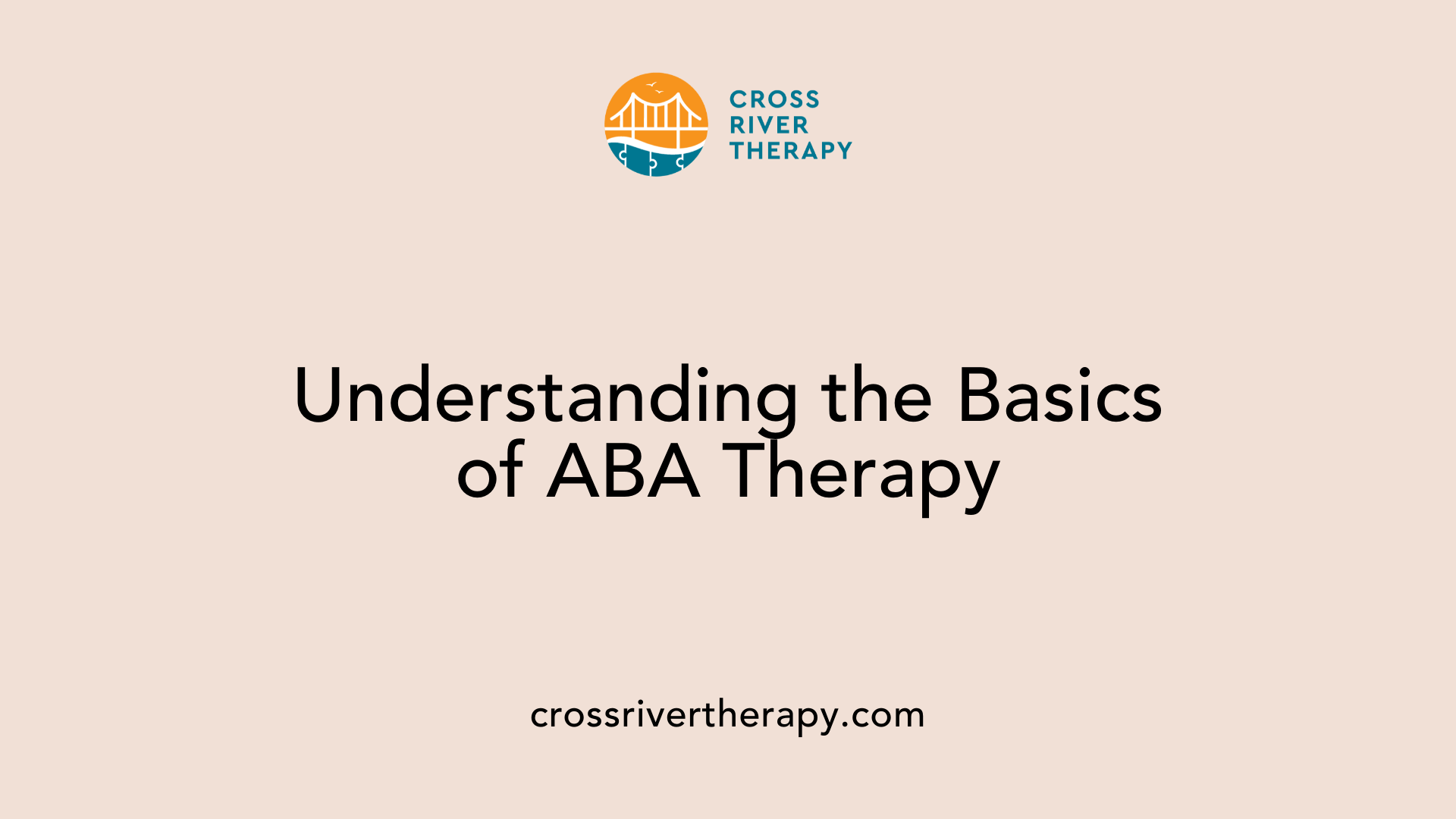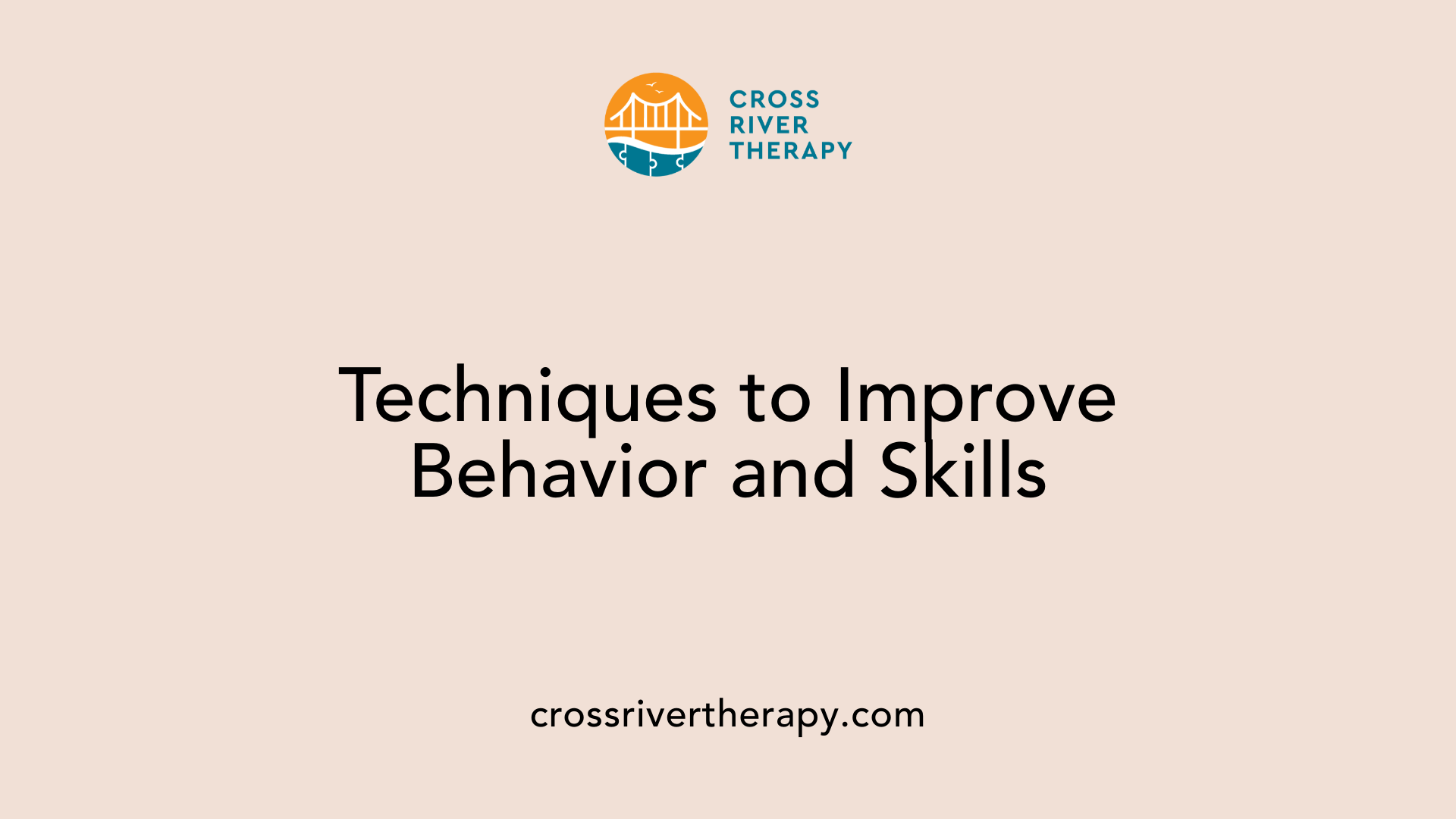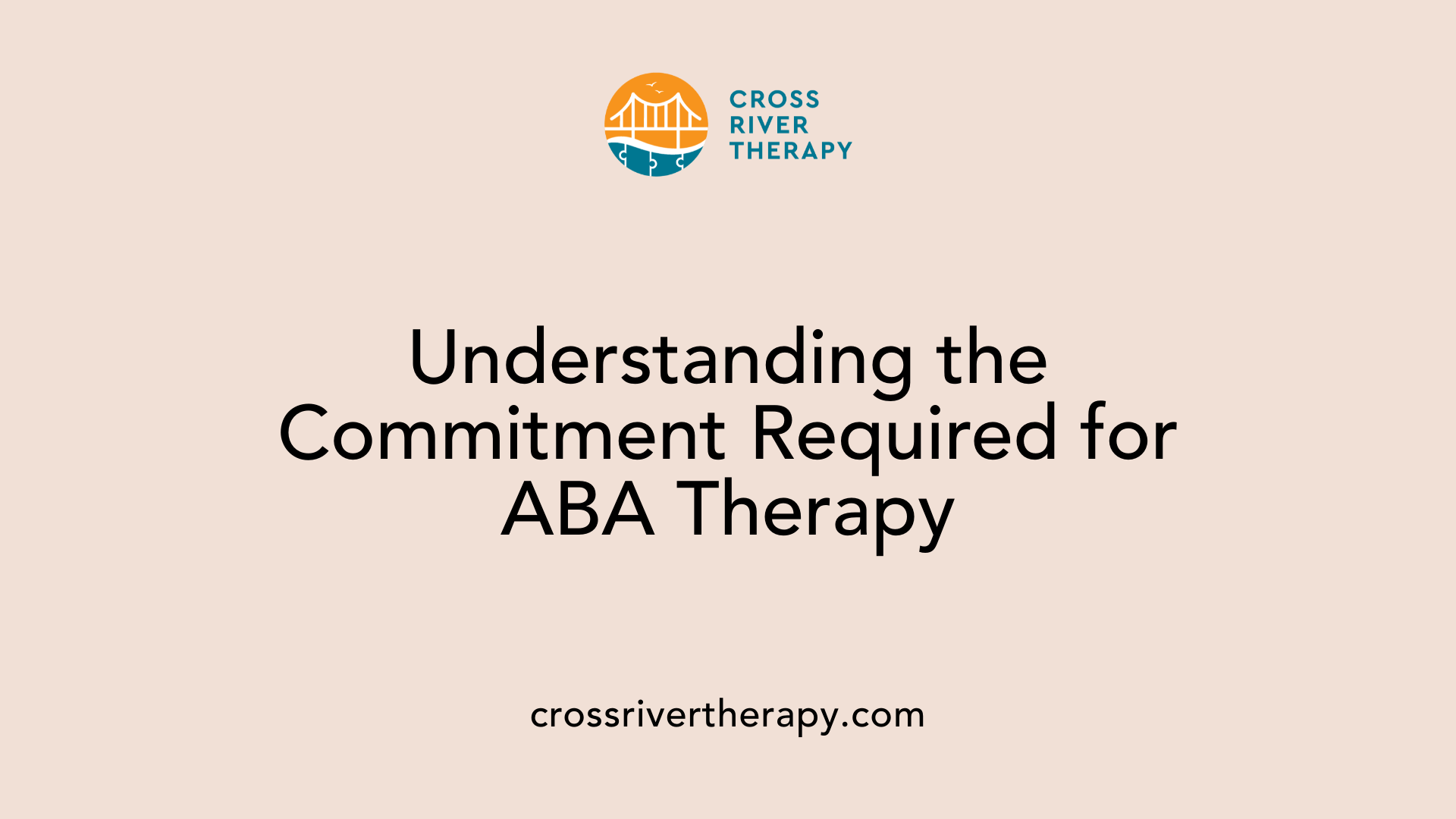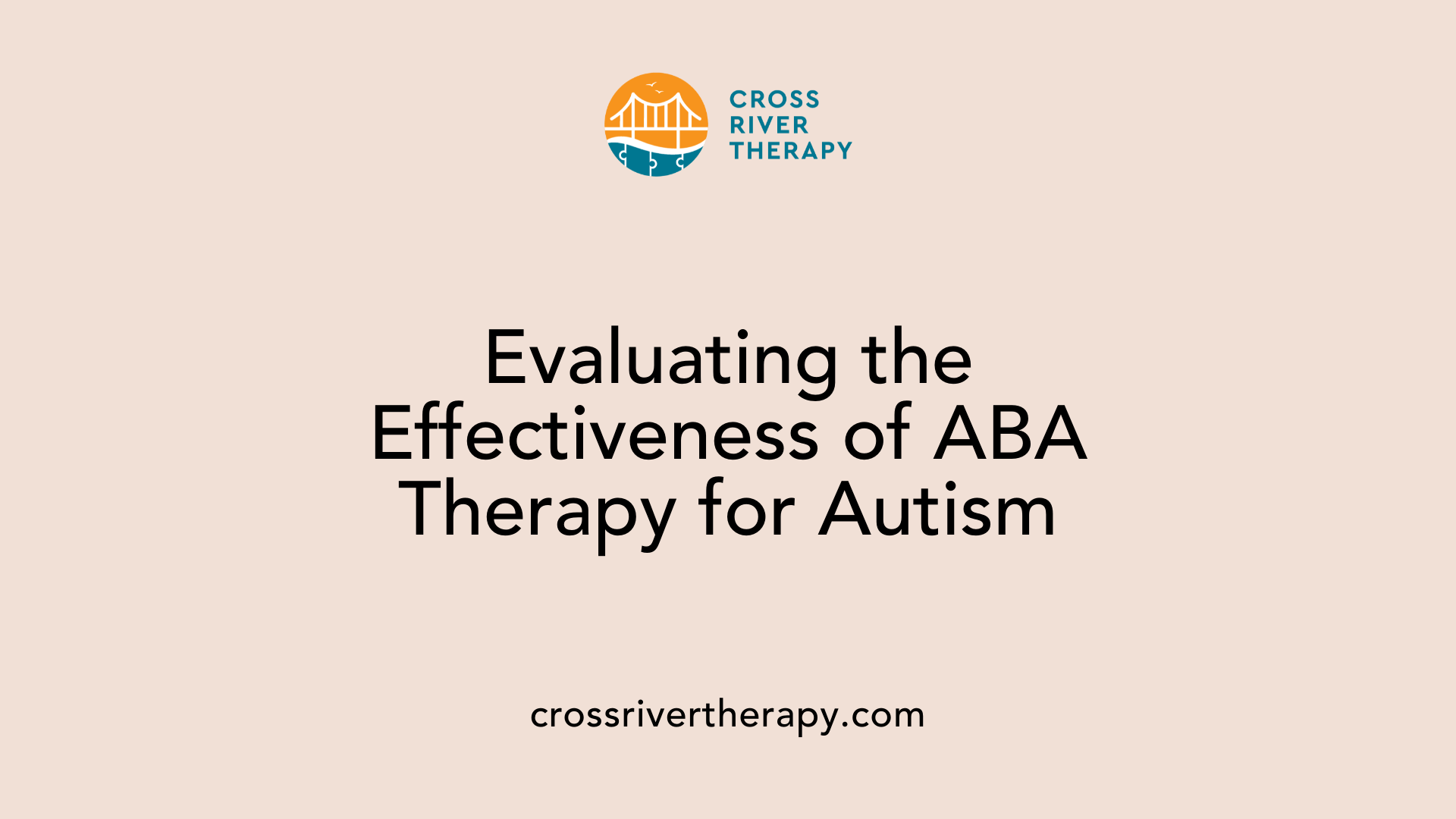The Long-Term Benefits of ABA Therapy for Autism
Exploring the Lifelong Advantages of Applied Behavior Analysis for Autism
Understanding ABA Therapy
Applied Behavior Analysis (ABA) is widely recognized as the leading therapy for Autism Spectrum Disorder (ASD), offering structured interventions aimed at improving behavior and skill sets in children. With its roots going back to the 1960s, ABA leverages evidence-based techniques to enhance the quality of life for individuals with autism. This article explores its long-term benefits, the methodology behind it, and perspectives on its effectiveness.
What is ABA Therapy?

Overview of ABA Therapy
Applied Behavior Analysis (ABA) is a structured therapy primarily aimed at assisting children with Autism Spectrum Disorder (ASD) in developing essential skills. This includes enhancing communication abilities, social interactions, and addressing challenging behaviors. Emphasizing the importance of reinforcing positive behaviors, ABA uses specific strategies tailored to each child’s unique strengths and interests, making it a highly individualized approach.
ABA's goals and objectives
The primary goals of ABA revolve around fostering essential life skills. These include personal hygiene, fine motor skills, emotional regulation, and the ability to understand and navigate social cues. By teaching constructive ways to express feelings, children can develop better coping mechanisms for frustration. ABA also prepares kids for adult life by enhancing independence and enabling better integration into mainstream environments, thereby improving their overall quality of life.
Individualized treatment approaches
A significant aspect of ABA is its adaptability. Each therapy session is customized based on a child's interests, ensuring more engaging and relevant learning experiences. Research indicates that early, high-quality interventions can lead to notable developmental gains, especially if children receive ample hours of therapy weekly. However, challenges in maintaining consistent treatment often arise from family circumstances, highlighting the importance of support systems for long-term success in ABA.
Overall, ABA remains the leading evidence-based intervention for autism, with extensive research backing its efficacy in helping children develop essential skills necessary for life.
Effective Techniques in ABA Therapy

What are some examples of ABA therapy techniques?
ABA therapy utilizes a range of techniques aimed at enhancing the skills of children with Autism Spectrum Disorder (ASD). These methods focus on both reinforcing desired behaviors and teaching new skills.
Reinforcement Strategies: This foundational aspect of ABA involves rewarding positive behaviors while discouraging negative ones. By reinforcing good behavior, children learn to replicate those actions.
Video Modeling and Prompting: Visual aids play a crucial role in teaching social interactions. In video modeling, children watch and imitate appropriate behaviors demonstrated on screen. Prompting involves giving cues to guide children in mastering skills, gradually reducing assistance as they become more independent.
Discrete Trial Training (DTT): This method breaks learning down into bite-sized steps, allowing for structured practice. Each trial consists of a clear instruction, the child's response, and the result, facilitating focus on specific skills.
Natural Environment Teaching (NET): Unlike DTT, NET focuses on real-life contexts for learning, offering children opportunities to practice skills in their everyday surroundings.
Other effective techniques include Functional Communication Training (FCT) to promote communication and Task Analysis, which simplifies complex tasks into manageable parts for easier learning. These diverse strategies illustrate how ABA therapy is tailored to meet individual needs, making it adaptable for various learners.
The Broad Benefits of ABA Therapy

What are the benefits of ABA therapy for autism?
ABA therapy offers extensive benefits for children with autism spectrum disorder (ASD), focusing on skill development across various areas. By employing a structured, individualized approach, ABA helps children enhance their communication abilities and social skills significantly.
The therapy utilizes positive reinforcement techniques. This method encourages children to engage in meaningful interactions and fosters the development of expressive language skills. Specialized sessions are tailored to meet each child’s unique strengths and interests, allowing for optimized learning experiences.
Emotional and social improvements
In addition to promoting communication, ABA therapy places a strong emphasis on emotional regulation. Children learn constructive ways to express their feelings and cope with frustration, which is crucial for their social interactions. By enhancing social skills, ABA prepares children to form friendships and engage positively with peers, thus boosting their confidence in social settings.
Overall quality of life enhancement
The cumulative effect of these advancements leads to a remarkable improvement in overall quality of life. Children who receive ABA therapy are better equipped with essential life skills, including personal hygiene and independence, helping to prepare them for adulthood. Research indicates that children who engage consistently in high-quality ABA therapy have the potential to return to mainstream classrooms, highlighting the long-term benefits of early and sustained intervention.
In summary, ABA therapy not only facilitates immediate skill acquisition but also lays a solid foundation for ongoing development and integration into society. Through this process, parents also gain insights and strategies to support their children's growth, further enhancing family dynamics.
Duration and Commitment of ABA Therapy

How long do children with autism typically need ABA therapy?
The duration of ABA therapy for children with autism typically spans 3 to 5 years. However, this timeframe can vary significantly depending on each child's unique needs and progress within therapy. Initially, therapy may involve full-time engagement, often scheduled 2 to 5 times a week, with each session lasting between 2 to 7 hours.
Determining how long a child will require therapy involves a thorough assessment by a Board Certified Behavior Analyst (BCBA). They take various factors into account, such as the child's age, the complexity of their behaviors, and the specific goals set for therapy. Typically, therapy continues until the child successfully meets established targets in areas like communication, social skills, and behavioral regulation.
What role does family play in determining duration?
Family involvement is crucial in the evaluation and decision-making process regarding the duration of ABA therapy. Parents provide valuable insights into their child’s progress and challenges, helping BCBAs make informed adjustments to therapy strategies. Insurance coverage for ABA therapy can also influence how long children receive treatment, as many insurance plans recognize its clinical necessity and effectiveness. Overall, a collaborative approach between families and therapists ensures that children receive the appropriate level of care for optimal outcomes.
| Therapy Aspect | Details | Impact |
|---|---|---|
| Typical Duration | 3 to 5 years | Supports long-term developmental improvements |
| Frequency of Sessions | 2 to 5 times a week, 2 to 7 hours each | Ensures consistent intervention and progress |
| Role of Family | Key input in evaluations and decisions | Enhances the effectiveness of therapy |
The Effectiveness of ABA for Autism

Why is ABA considered an effective treatment for autism?
ABA, or Applied Behavior Analysis, is recognized as a highly effective treatment for autism due to its structured approach to behavior modification. The therapy uses data-driven methods, focusing on identifying specific behaviors to encourage while reducing those that are less favorable. This systematic process involves reinforcing positive behaviors, making it easier for children to acquire new skills.
Through ABA therapy, children learn essential life skills that are critical for their independence. Key areas of focus include:
- Communication skills: ABA employs strategies to improve expressive language abilities, helping children articulate their needs.
- Socialization: The therapy provides techniques to develop social skills, making it easier for children to interact and build friendships.
- Daily living skills: Children are taught personal hygiene and fine motor skills, which are vital for self-care.
Moreover, the individualized nature of ABA allows for customized sessions tailored to each child’s strengths and interests. This personalization increases the likelihood of positive outcomes, as it fosters engagement and motivation throughout the learning process. Also, research supports the effectiveness of ABA, with many studies showing significant gains in socialization, communication, and adaptive behavior for children who undergo consistent ABA intervention.
It's important to note that early and sustained engagement with ABA—ideally more than 20 hours a week before age four—can result in substantial developmental gains, often leading to a reduced need for special services later in life. Overall, ABA not only enhances immediate skills, but it also lays the foundation for a better quality of life and greater integration into society.
Expanding the Use of ABA
Is ABA therapy only used for autism?
ABA therapy is a versatile and effective intervention that extends beyond autism spectrum disorder (ASD). While it is widely recognized for its application in treating autism, its techniques can successfully address various behavioral conditions. Notably, ABA has proven beneficial for children with ADHD, OCD, PTSD, and other behavioral issues.
The fundamental principles of ABA, such as reinforcement and behavior modification, can be tailored to fit the unique needs of individuals across different developmental stages. From children struggling with social skills to adults facing anxiety-related challenges, ABA provides adaptable strategies that promote positive behavior and minimize negative actions.
In addition to mental health conditions, ABA techniques have also found applications in educational settings and sports psychology. Educators utilize these methods to improve classroom behavior and learning outcomes. Similarly, coaches may implement ABA strategies to enhance athletes' focus and performance.
Thus, ABA therapy represents not only a pivotal intervention for those diagnosed with autism but also a valuable approach for a diverse array of behavioral challenges, making it a crucial tool in various therapeutic and academic environments.
Addressing Concerns and Criticisms of ABA
Are there any long-term negative effects of ABA therapy?
The discussion around Applied Behavior Analysis (ABA) therapy includes concerns about long-term negative effects. Some individuals may experience emotional distress or increased anxiety. Critics note that the pressure to suppress autistic traits in favor of conforming to societal norms can lead to issues related to identity.
Furthermore, intense ABA programs, particularly when implemented rigidly, can result in burnout and resistance, which may undermine the intended benefits of the therapy. Historical practices involving punishment in ABA have been scrutinized, as these approaches can cause trauma and have been linked to higher rates of PTSD symptoms later in life.
Balancing criticism and effectiveness
Despite these criticisms, it is important to recognize that many modern adaptations of ABA focus heavily on positive reinforcement and respect for neurodiversity. These updated strategies aim to tailor interventions to individual needs rather than adopting a one-size-fits-all approach. Some advocate that while concerns are valid, the overall effectiveness of ABA therapy in improving communication, daily living skills, and socialization in children with Autism Spectrum Disorder cannot be overlooked.
As research continues to evolve, there is a pressing need for comprehensive studies that assess both the benefits and potential drawbacks of ABA interventions. This ongoing inquiry may guide practitioners, families, and advocates towards approaches that fully address the complexity of autism and the unique experiences of each individual, ensuring that the therapy remains beneficial without compromising well-being.
Filling the Gaps: ABA Service Delivery Challenges
Challenges in consistent therapy delivery
While Applied Behavior Analysis (ABA) is recognized for its effective interventions for children with Autism Spectrum Disorder (ASD), challenges persist in maintaining consistent therapy delivery. Studies indicate that only 66% of children referred for ABA therapy actually initiate treatment and continue for a minimum of 12 months. Even more significantly, only 28% receive their full prescribed hours of ABA, which suggests substantial gaps in service delivery.
Discontinuation of therapy is often linked to family circumstances rather than clinical progress. This emphasizes the importance of providing additional support to families to ensure continued access to therapy, which could greatly impact the child’s development.
Impact on long-term outcomes
The consequences of inconsistent therapy can be profound. Research reveals that children with the lowest baseline adaptive levels achieved significant gains after 24 months of consistent ABA treatment. Children who receive early, high-quality interventions can integrate into mainstream classrooms, yet inconsistent attendance can hinder these outcomes.
Hence, strengthening support systems for families could enhance therapy continuity, effectively bridging the gap between ABA services and improved long-term results. Ultimately, addressing these service delivery challenges can be essential for maximizing the potential benefits of ABA for children with ASD.
Parental Empowerment in ABA
Role of Parents in ABA
In the landscape of Applied Behavior Analysis (ABA), parents play a pivotal role. They are not just observers but active participants in their child's therapy journey. Parents are encouraged to engage in sessions, providing contextual insights into their child's strengths, needs, and everyday environments. This involvement ensures that interventions are not only effective in the clinical setting but also transferable to home and community contexts.
Training and Support Provided to Families
Training is a fundamental component of ABA therapy. Parents receive guidance on strategies to reinforce their child's learning and development outside of therapy. This includes techniques for enhancing communication skills and managing daily routines. Support systems may involve workshops, one-on-one coaching, and resources tailored to familial needs, fostering a collaborative approach to care.
Enhancing Family Dynamics
The shared experiences during ABA therapy can strengthen the parent-child relationship. As parents learn to apply behavioral strategies, they contribute to significant improvements in their child’s socialization and emotional regulation. This empowerment not only aids the child’s development but can also enhance family dynamics, creating a supportive environment for growth.
Preparing for Adulthood with ABA
Life Skills Acquisition
ABA therapy is structured to focus on essential life skills, such as personal hygiene and daily living tasks. Through positive reinforcement, children learn behaviors that contribute to their independence. For instance, they might practice self-care routines or develop fine motor skills necessary for tasks like buttoning shirts or using utensils.
Social Cue Understanding
A significant component of ABA therapy involves helping children understand social cues and interactions. This teaches them to navigate social situations effectively, fostering their ability to form friendships and engage in meaningful conversations. As they learn to interpret non-verbal cues and respond appropriately, their confidence in social settings grows.
Preparing for Independence
Ultimately, ABA therapy equips children with crucial behavioral management skills. By cultivating communication skills alongside life skills, children gain a clearer understanding of social expectations and responsibilities. This holistic approach bridges the gap between childhood and adulthood, enabling them to partake in community activities and pursue educational opportunities, thereby enhancing their overall quality of life.
In summary, ABA helps pave the way for successful transitions into adulthood by instilling critical skills and fostering self-sufficiency.
Scientific Foundations of ABA
Empirical Evidence Supporting ABA
Applied Behavior Analysis (ABA) stands out as one of the most extensively researched and validated interventions for Autism Spectrum Disorder (ASD). Numerous studies demonstrate its effectiveness in enhancing communication, socialization, and expressive language skills for children with autism. Data suggests that ABA leads to significant developmental improvements when used consistently, particularly for children early in life—those who undergo therapy for more than 20 hours a week before age four show substantial gains in skill acquisition.
Moreover, ABA demonstrates impressive outcomes in empowering children with autism to transition back to mainstream education. Research indicates that approximately 40-50% of children treated with high-quality ABA interventions are capable of rejoining regular classrooms, highlighting potential long-term benefits and improved quality of life.
Comparison with Other Interventions
When comparing ABA to other available interventions, it's evident that ABA holds a stronger foundation of empirical support. Many alternative therapies lack the extensive scientific validation that ABA possesses. For instance, while other approaches may focus on specific areas like sensory integration or play therapy, ABA's comprehensive nature addresses a broad spectrum of skills ranging from basic communication to complex social interactions.
Importantly, the effectiveness of ABA is accentuated by its customizable nature, allowing sessions to be tailored to each child's unique strengths and needs. This individualized approach, backed by scientific evidence, is vital for promoting the best possible outcomes for children with autism.
The Impact of Early ABA Intervention
Benefits of starting ABA early
Early intervention with Applied Behavior Analysis (ABA) therapy is critical for children with Autism Spectrum Disorder (ASD). Initiating ABA therapy before the age of four not only supports the development of crucial skills but also enhances socialization and communication. Research indicates that children receiving over 20 hours of ABA therapy weekly in their formative years can achieve substantial developmental gains.
By tailoring sessions to each child's unique strengths and interests, ABA promotes engagement and the mastery of essential life skills, including personal hygiene and fine motor skills. These early interventions lay the groundwork for improved expressive language skills, enabling children to communicate more effectively.
Correlations with reduced need for future services
The long-term effects of early ABA intervention extend beyond immediate skill acquisition. Studies have shown that children who undergo intensive, evidence-based ABA therapy during their early years often encounter fewer challenges in later life, reducing the likelihood of requiring special services. A notable 40-50% of children with autism may return to mainstream classrooms following early intervention, highlighting the significant potential for increased independence.
Continued support in ABA allows parents to learn strategies that foster their child’s growth. This support enhances the parent-child relationship and facilitates emotional regulation—teaching children how to express feelings appropriately and cope with frustration. Ultimately, early ABA therapy not only improves immediate outcomes but significantly impacts future quality of life.
Overcoming Misconceptions About ABA
Common Misconceptions
Applied Behavior Analysis (ABA) therapy is often misunderstood. Some people think ABA is simply about teaching children with Autism Spectrum Disorder (ASD) to behave in a certain way, but this is far from the true essence of the therapy.
ABA is a highly individualized approach that takes into account each child's unique strengths and interests. This means therapy is tailored specifically to each child, enhancing their communication, socialization, and daily living skills. It’s not about conformity but rather fostering each child's potential in a supportive manner.
Clarifying Myths About ABA Therapy
Another myth is that ABA therapy is only effective in a clinical setting. While structured environments play a significant role, ABA can be applied in everyday scenarios, helping children generalize what they learn to various contexts, thus assisting with real-world interactions and relationships.
Moreover, some believe that ABA imposes control rather than supporting personal growth. In truth, ABA emphasizes positive reinforcement, allowing children to express feelings and cope with frustrations. This method enhances emotional regulation and significantly improves the child's quality of life.
ABA's Long-Term Benefits
Statistically, children receiving robust ABA support, especially before age four, are more likely to thrive both socially and academically. Despite some misconceptions, evidence shows that early and consistent ABA therapy can lead to substantial developmental gains, preparing children for a more integrated adult life. Understanding these aspects is essential to appreciate the benefits ABA truly offers.
The Future of ABA Therapy
Trends and Innovations in ABA
The landscape of Applied Behavior Analysis (ABA) therapy is evolving. One of the most promising trends is the shift towards even more individualized therapies, utilizing technology to customize sessions based on each child's unique strengths and interests. Virtual reality and augmented reality tools are being explored to create immersive environments for social skill training, further enhancing learning experiences.
Potential Developments and Improvements
Research into ABA is ongoing, which could lead to significant theoretical and practical advancements. Studies continue to refine methodologies, focusing on efficacy while also addressing challenges like service delivery and maintenance of therapy engagement. The incorporation of family support systems is deemed crucial to improve retention in therapy. With emerging evidence demonstrating the effectiveness of ABA, it's possible that integration with other therapeutic approaches may become a standard.
Closing Thoughts
The future of ABA therapy looks promising, especially as we witness a focus on parent education and support. By equipping families with strategies to reinforce learning at home, children can achieve better outcomes in communication, socialization, and life skills. As research continues, these adaptations of ABA therapy may lead to even more positive impacts on the lives of children with autism and their families.
Concluding Thoughts on ABA Therapy for Autism
By equipping individuals with vital skills and empowering families, ABA therapy plays a transformative role in the lives of those with autism. While challenges exist in service delivery and misconceptions persist, the evidence underscores its effectiveness in fostering greater independence and improving quality of life. As ABA therapy continues to evolve, it offers promising pathways for those on the autism spectrum to achieve their full potential, making a compelling case for its continued use and development.
References
- 6 Life-Changing Benefits of ABA Therapy for Children with Autism
- The Top 10 Reasons Children With Autism Deserve ABA - PMC
- Patient Outcomes After Applied Behavior Analysis for Autism ...
- Applied Behavior Analysis (ABA) - Cleveland Clinic
- Is ABA Therapy Only for Autism? - Applied Behavior Analysis Degrees
- Applied Behavior Analysis (ABA) | Autism Speaks
- The Controversy Around ABA - Child Mind Institute



